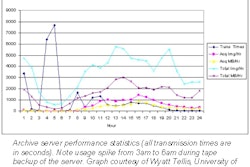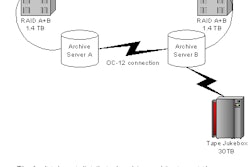
AuntMinnie.com is pleased to present the fourth in an ongoing series of practice management articles contributed by the Radiology Consulting Group in Boston. This twice-monthly series addresses topics and issues of concern to radiology administrators and business managers.
By Rania Omar, senior consultantRadiology Consulting Group

For example, cases can go unread due to failure to cancel examinations that were completed in the RIS; incorrectly completed studies; association problems such as linking a dictated report to an examination accession number; not transmitting studies from the scanner; and merged studies. However, careful planning can ensure that exams are both available and read in the network.
The digital environment lacks traditional visual cues to warn when a case may have been left unread, since the technologist never sees a hard-copy film. So if the technologist fails to network a case into the PACS, the radiologist can't interpret the exam And if studies aren't uploaded into the PACS at the time they're completed, the images may become lost when the disks are recycled.
Image service representatives
Radiologists at Massachusetts General Hospital (MGH) in Boston use a combination of Web-based tools and human resources to ensure that all exams are read. The MGH image service team, comprised of film library staff, leads a program called the Unread Case Initiative. Former film librarians have been given new responsibilities, and are now known as image service representatives (ISRs).
New training competencies and a new training manual were developed for each unique area within the radiology department. This ensures that ISRs receive all the training they need to succeed in their new roles. They learn how to troubleshoot PACS-related problems, correct technologist errors, and expand their computer skills in the process.
ISRs use a reporting tool that generates a daily list of cases that need to be read (see Figure 1 below). A tracking tool is also used to show why cases go unread, and how they can be lost in the network. The goal was to implement a system of accountability and responsibility, and to ensure that every completed exam has a report attached to it within three days.
 |
Automated data integrity tools
The large volume of studies at MGH means that the ISRs can't check on every case performed by every technologist connected to the PACS. So the PACS and information technology (IT) team at MGH developed an operational information integrity and quality control program, called CheckPACS, that uses Web-based tools to ensure that cases are read. The application allows technologists and ISRs to verify that all studies performed reach the PACS system.
The program lists all studies that have been performed, but not uploaded into the PACS, and serves as a kind of checkpoint to ensure that completed studies are available for interpretation. An ISR and a member of the PACS IT team are responsible for using CheckPACS daily, and then promptly resolving any discrepancies with the appropriate technologist.
While PACS creates ample opportunities for operational efficiencies, these cannot be achieved without sound pre-PACS workflow analysis and re-engineering. This process includes identifying and resolving pre-PACS operational inefficiencies, and careful planning to anticipate all potential operational impacts, such as unread cases. Each potential failure point can be identified and proactively addressed by implementing support systems based on accountability.
By Rania OmarAuntMinnie.com contributing writer
May 30, 2001
Related Reading
Secure patient satisfaction through superior service, May 17, 2001
What's up D.O.C? Non-PACS innovations in radiology, April 30, 2001
Click here to post your comments about this story in our PACS Digital Community. Please include the headline of the article in your message.
Copyright © 2001 AuntMinnie.com



















